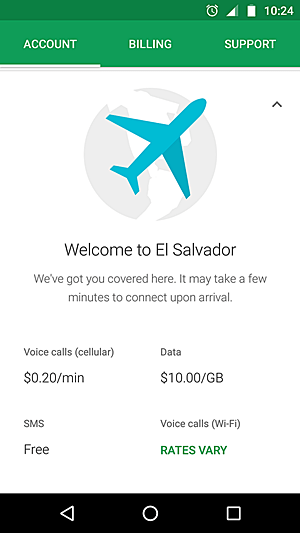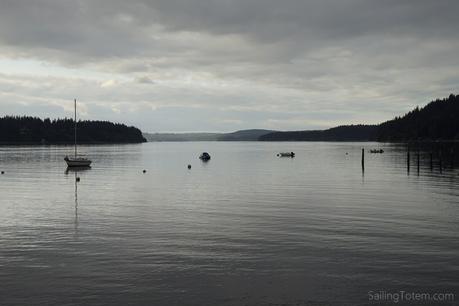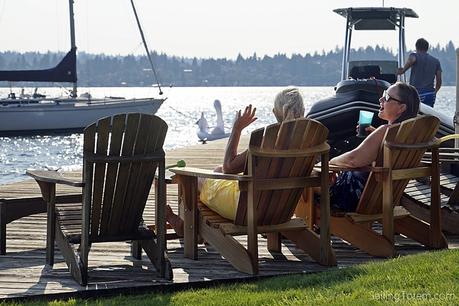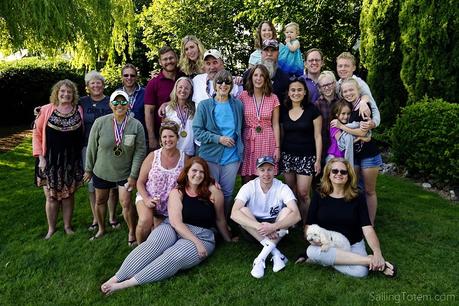
Ah, the freedom of cruising! No commute, no schedule, no phone ringing… WAIT A MINUTE THERE. Phones? We gave our cell phones up when we took off in 2008 for a blue horizon. But the world changed and they crept back in a few years later, and are now indispensable travelers tools. Used as a hotspot, a smartphone is our primary vehicle for getting online aboard Totem. Apps connect us to helpful tools from mapping to translation and a myriad of other tools. Necessary to keep up Totem’s Instagram! Can you use what you have? Do you get a local burner? What about international roaming? Here’s what works when you’re a border-hopping nomad.
Our current solution is to have two phones: one is a permanent US number (keeps us connected to folks at home and gets us online faster in a new place), and the other gets a new SIM card for whatever country we’re in (local rates are more affordable, and we may want to make local calls/texts).

The US phone is part of Google’s Project Fi; it means we are instantly online when we pick up a new country’s cell tower, as long as it’s one of the 135 countries in their plan (right, that’s most, although not French Polynesia). We are easily reached on a single number for text or calls, and billing is scaled at transparent, affordable rates: free texts, international roaming calls at $.20/minute, and data metered at $10/gigabyte.
It cracked me up as we sailed up the west side of central America this spring when Project Fi announcement on our phone was the first clue an international boundary line was crossed.
The local phone starts with any international-friendly unlocked phone. Unlocked is essential for swapping out SIM cards when you’re in a new country, of course, so make sure that doesn’t require a trip to the Genius Bar first. Will your current phone will work internationally? Ask the carrier, try this map, or look up the device in Wikipedia. If you’re buying a new phone, look for phones that are GSM, or work on “quad band,” or work specifically on 850/900/1800/1900 MHz bands.
Why do you want a local number? If we only had one phone aboard, we’d choose this route. First, because this is our primary way to get online, and a local carrier’s plan has cheaper data rates (Telcel in Mexico runs around $5/gb, for example) than Project Fi ($10/gb) in most places/situations.
Second, because we make and receive calls and texts in other countries, and a local contact isn’t going to place an international call to reach our US number. For example: local calls/texts to arrange inland travel or just to coordinate a ride with a taxi to get fuel. Getting around on the back of a motorcycle is common in Indonesia, and when I had a good driver I’d text to request them specifically.

Want to keep your current US phone number? That’s possible but more complicated. If you stay with your current service, know that the international roaming data is likely to be throttled (T-mobile swore we’d have 4G in the Bahamas and Caribbean, but that was only possible with local plans; we were limited to 2G). Also, your service will be cut off with minimal notice if you use it for some months without being back in the USA. Harsh, right? It happens! The fine print in Terms & Conditions for US carriers limit international use (at their discretion); this roaming is intended for part-time only.
Keep your number another way by forwarding it to your local country number. It requires paying for your US service and a VOIP phone number in the US, but that might be important for you. How does the magic happen? This is written up in detail by SV Liquid, check out the post.
I want to try Project Fi!
We think Project Fi kind of awesome. We’re able to help a handful of people save $20 on their first bill if they sign up with this link: https://g.co/fi/r/3208HT (I think it’s capped at 10 referrals. First come first served! It saves us $20, too, so… thanks!). A US address is required to sign up for Project Fi.
Signing up with Project Fi may mean buying a new phone, as only select models are compatible. You can buy one from Google, or buy the right model elsewhere and purchase a plan from Google (the SIM is free). Phones start under $200 for a Moto G6, or you can spend hundreds more for schmancier Pixel 2 or LG models. Nice to know: both Fi-friendly Motorola models have meaningful water resistance, so wet dinghy rides (and even a dunking) aren’t going to kill your device.

Other tips
Apps not direct dial! Despite these two phone numbers we now carry around, what we use most for calls is an app: usually Whatsapp or Skype. Whatsapp is widely used (not just in the USA), and means I can use my US-number-phone to “call” the Costa Rican taxi driver on his phone. Skype is useful because you can use Skype to call a physical phone (landline or mobile), and the rates are much cheaper than Project Fi (a couple of cents per minute, instead of $0.20/minute; it adds up over an hourlong call!).
We added a mobile signal booster to Totem’s kit in 2016. The Wilson WeBoost works by amplifying an existing cellular signal; pick that up with a phone/device on board the boat. Unit pricing varies by how many devices can connect at once, and start around $150. They don’t work everywhere and international benefit is unclear, but we definitely felt the boost in the Bahamas, and again in Mexico… retaining a signal in areas we were told there was none on our way up the Sea of Cortez.
Staying in touch, taking snapshots of your adventures, getting online, growing your Instagram, whatever it is: a phone is indispensable. Got a question about use as a cruiser I didn’t cover? Ask in the comments and I’ll follow up!
Puget Sound denizens, join us in September!
- Friday-Sunday, 7th -9th: Wooden Boat Festival, Port Townsend. Presenting all three days
- Friday 14th, 7 pm: Seattle’s Corinthian Yacht Club. Details here
- Tuesday 18, 5:30 pm: Shilshole Bay Yacht Club’s September dinner meeting. This event is for SBYC members; if you’d like to attend, contact me for details to join as a guest.
- Friday 21st, 7:30 pm: Puget Sound Cruising Club’s September meeting
- Vancouver friends, we regret that the BCA event planned for the 12th has been canceled, and hope you might find us near Seattle instead.
Come find us at the Annapolis Boat Show, starting October 4!
- Oct. 4-8th, afternoons: Cardinal publishing and Good Old Boat booths
- Oct. 5-7th, mornings: instructors for Take The Wheel
- Oct. 5th, afternoon: seminar sponsored by Cruising World
- Oct. 8-11th: Cruisers U seminars, including Cruising Women with (Behan co-leads with Pam Wall) and Jamie’s popular Crisis Management class
It’s about seven weeks until we return to Totem, but who’s counting? The Pacific Northwest summer is fading an it appears There Will Be Socks before we can return to Mexico. Enjoy these snapshots of our summer and wish us warmth!



